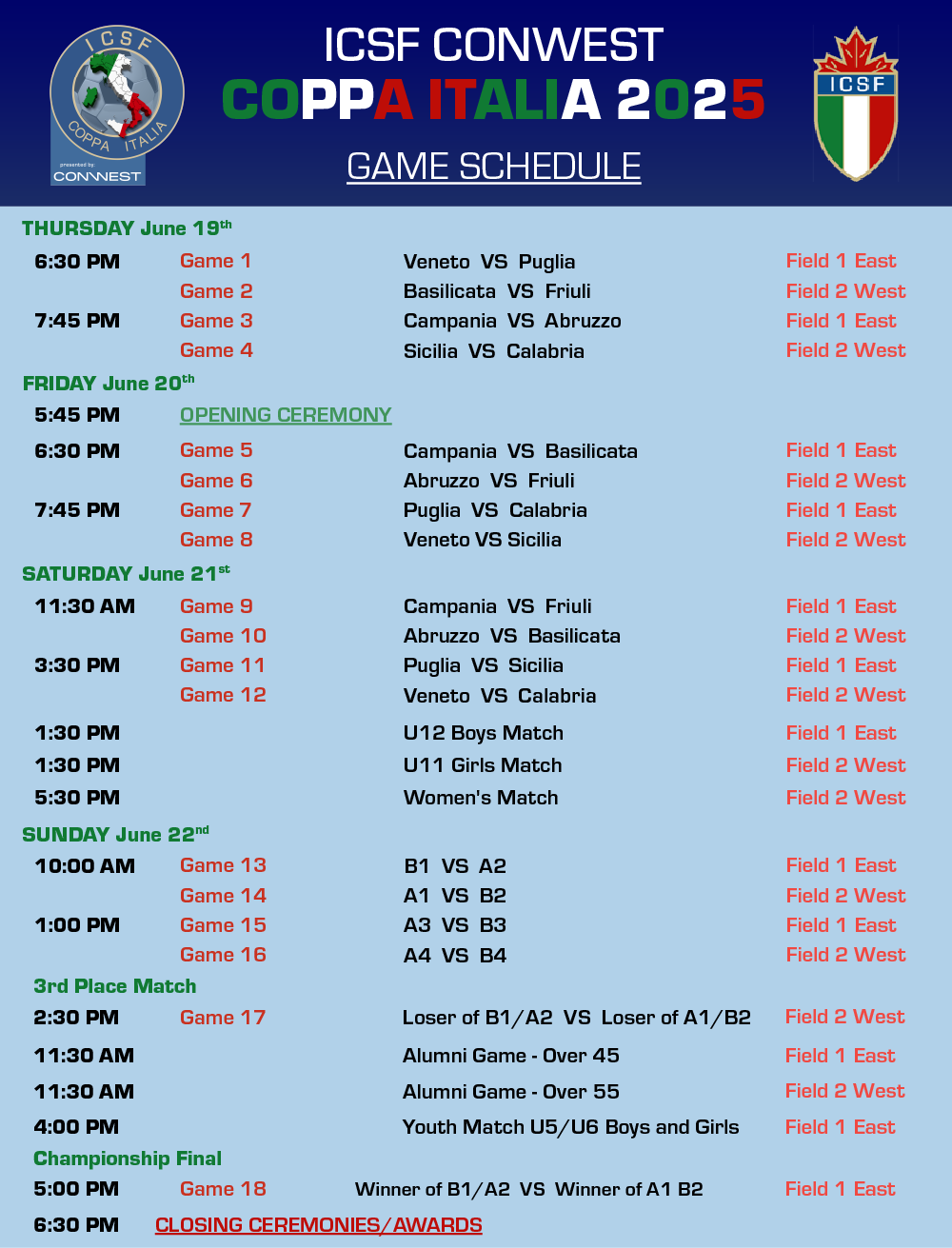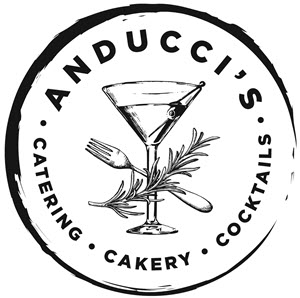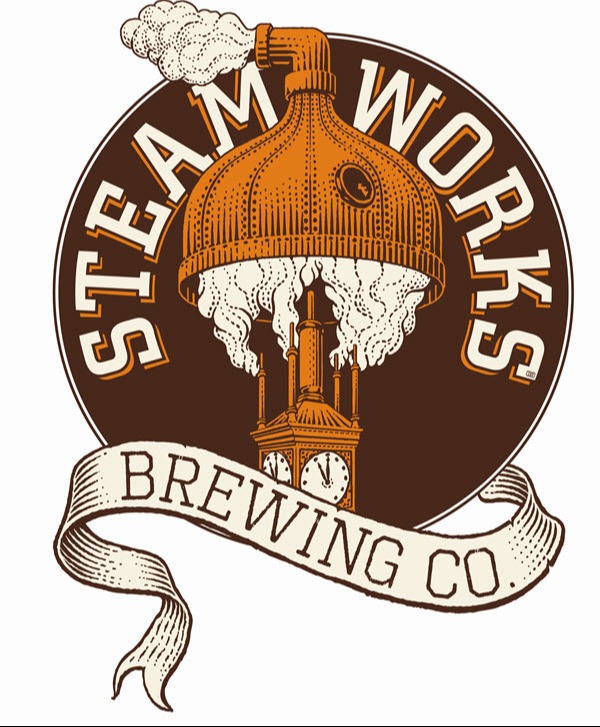ICSF is excited to once again be hosting the ICSF Conwest Coppa Italia 2025 Tournament. The tournament will be back at Adanac Park from June 19-22, 2025. An exciting weekend of re-establishing rivalries between regions, displaying excellent soccer, authentic Italian food, beer garden and bringing back the memories and ambiance of the original tournament days!
Originally founded in the early 1980’s, the tournament was officially known as the ICSF Inter-Regional Tournament, or more commonly, “The Italian League”. The format during this era saw the tournament span over several weeks which commenced in the spring and culminated into a televised (Shaw Cable) final at Swangard Stadium where a Champion was named. Games were held Wednesday’s and Sunday’s at Adanac Park in Vancouver and Burnaby Heights Park in Burnaby. At its’ peak, the tournament included approximately a dozen teams representing different regions and provinces of Italy, drawing several hundred spectators weekly to watch the exciting games. “The Italian League was the talk of the local soccer community and displayed the very best Italian and non-Italian elite soccer players from around the Lower Mainland for several years, and to this day the fond memories live on. Unfortunately, in the mid 1990’s the tournament ceased operating due to various challenges, but what an incredible ride it was! After a few attempts at bringing the tournament back in different formats, in 2019, a three-day 8 v 8 tournament was revived at the very same Adanac Park where it all began.
In 2019, the ICSF re-created the Coppa Italia after an almost 25-year hiatus in the form of a three-day tournament at Adanac Park one of the sites for the original tournament. Eight Regional Provinces of Italy battle for the Coppa title: Abruzzo, Basilicata, Calabria, Campania, Lazio, Molise, Sicilia, Veneto. After three days of fierce competition and hard-fought matches, Calabria came away with the 2019 trophy! The tournament captured the long history, passion, Italian regional pride, and the love of competitive soccer in the Italian Canadian community of the Lower Mainland once again, with hundreds of spectators flocking to Adanac Park to cheer on their region.
The ICSF Conwest Coppa Italia 2025 will once again feature regional teams (Abruzzo, Basilicata, Calabria, Campania, Friuli, Puglia, Sicilia and Veneto) with a chance to knock off reigning 2024 Champion's Team Campania and have their region engraved on the coveted ICSF Conwest Coppa Italia Cup.
Thank you to all the local businesses who continue to graciously support the tournament and helping to make ICSF Conwest Coppa Italia a great success!
Interested in sponsorship opportunities? Our wonderful volunteers make the event a success every year. Join us in 2025!
Contact us at info@icsf.ca.
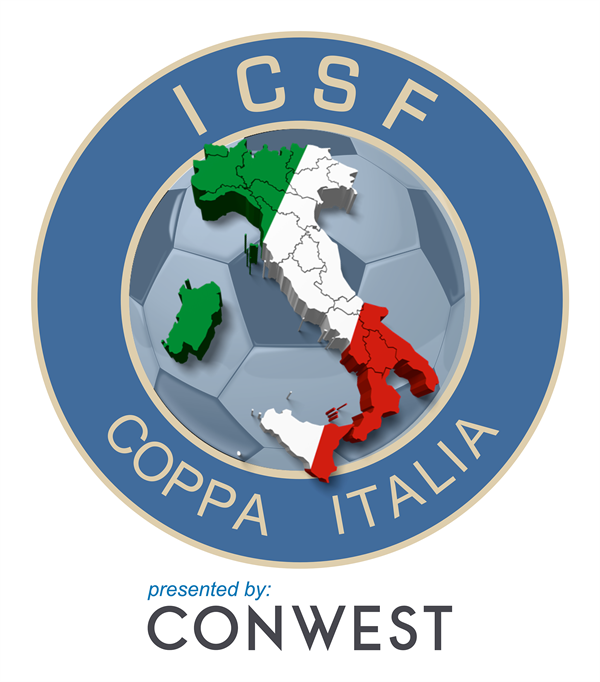

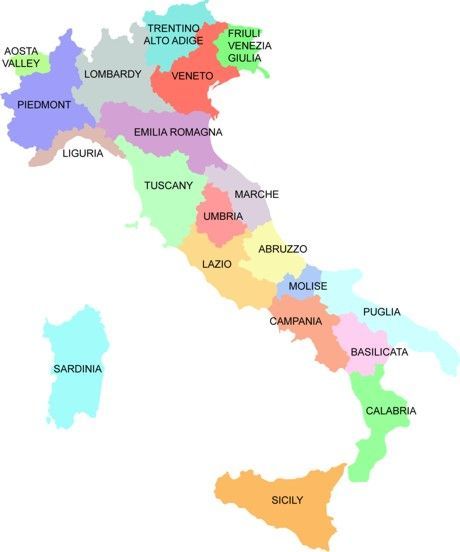
8 regions will battle for the COPPA
The Tournament will comprise eight (8) Regional Provinces of Italy:
Abruzzo, Basilicata, Calabria, Campania, Friuli, Puglia, Sicilia, Veneto
To make this a true regional event the rules and regulations have been set so that there is community support and involvement from each Region.
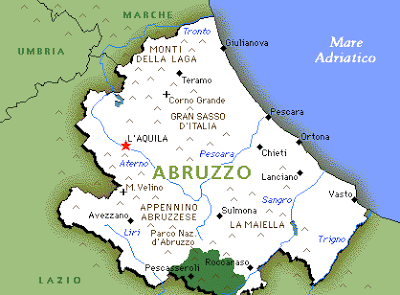
Abruzzo is located in central Italy and stretches from the heart of the Apennines to the Adriatic Sea, on mostly mountainous and wild terrain.
In the mountains, tourist resorts and well-equipped facilities for skiing and winter sports rise among unpolluted peaks and rocky walls: among them are Pescasseroli, Rivisondoli and Roccaraso.
The natural landscape of the high and steep peaks of the Gran Sasso, Laga Mountains, and Mount Majella slopes down to a wide range of hills, until it finally reaches the Adriatic coast.
The Adriatic coast is characterized by long and sandy beaches to the north and pebbly beaches to the south. Also, the small villages of the hinterland, as well as the monasteries and castles of the region, are very charming and part of many touristic routes in this the “greenest region” in Italy.
The provinces of the region are: L’Aquila (regional capital), Pescara, Teramo and Chieti.
Abruzzo has a rich culinary tradition, with various traditions attached to each province.
The maccheroni alla chitarra are highly-renowned (home-made pasta cut on a machine with thin steel blades), while scrippelle are thin strips of pasta eaten in soup, typical to Teramo. On the coast, most first courses are fish-based, often made with tomato to enhance the taste of “poor man’s fish,” often found on the shores of ancient fishing villages.
A typical meal in Abruzzo is accompanied by a selection of the best wines of the Region: Montepulciano d’Abruzzo, Sangiovese and Trebbiano d’Abruzzo.

Basilicata is embedded between Calabria and Apulia, in the south of Italy.
One does not stumble across this region accidentally but chooses to visit it in search of a new experience, plunging into places where silence, colors, scents and flavors remove the visitor from the frenzy and stress of modern life and offer unique sensations.
TThe woods and forests that cover the mountains are dotted with small and charming villages, some even at an altitude of 1000 mt, where pure air, genuine flavors and the beauties of nature are combined with historical vestiges satisfying every curiosity.
The Ionic coast, with the two famous sea resorts of Metaponto and Policoro, offers wide beaches, either sandy or pebbly, and partially surrounded by pinewoods and rows of eucalyptus that give off a lovely scent.
Matera’s Paleolithic settlements, the “Sassi,” are inscribed on the UNESCO World Heritage List, along with Matera’s numerous rupestrian churches. Taking a walk along the lanes of the Civita, the oldest part of the town, you enter the ancient urban area formed by a dense network of caves, dug out of the rock by shepherds to shelter their family and livestock. It is an ancient architectural work with no design, which gave rise to a real monumental work, attracting millions of visitors from all over the world.
The typical food of Basilicata, simple and fragrant, is entirely based on a few local products, wisely combined in typical and very old traditional dishes.
The most important product is certainly durum wheat homemade pasta, kneaded with ancient tools like the rasola, the cavarola (a blade and a small chopping board, respectively) and the maccarunara. Just the skill and mastery of the housewives is needed to make other types of pasta, like minuich and tria.
The tastiest sauces cannot go without hot pepper (pepperoncino), the real symbol of cuisine in Basilicata, locally known as diavolicchio (little devil).

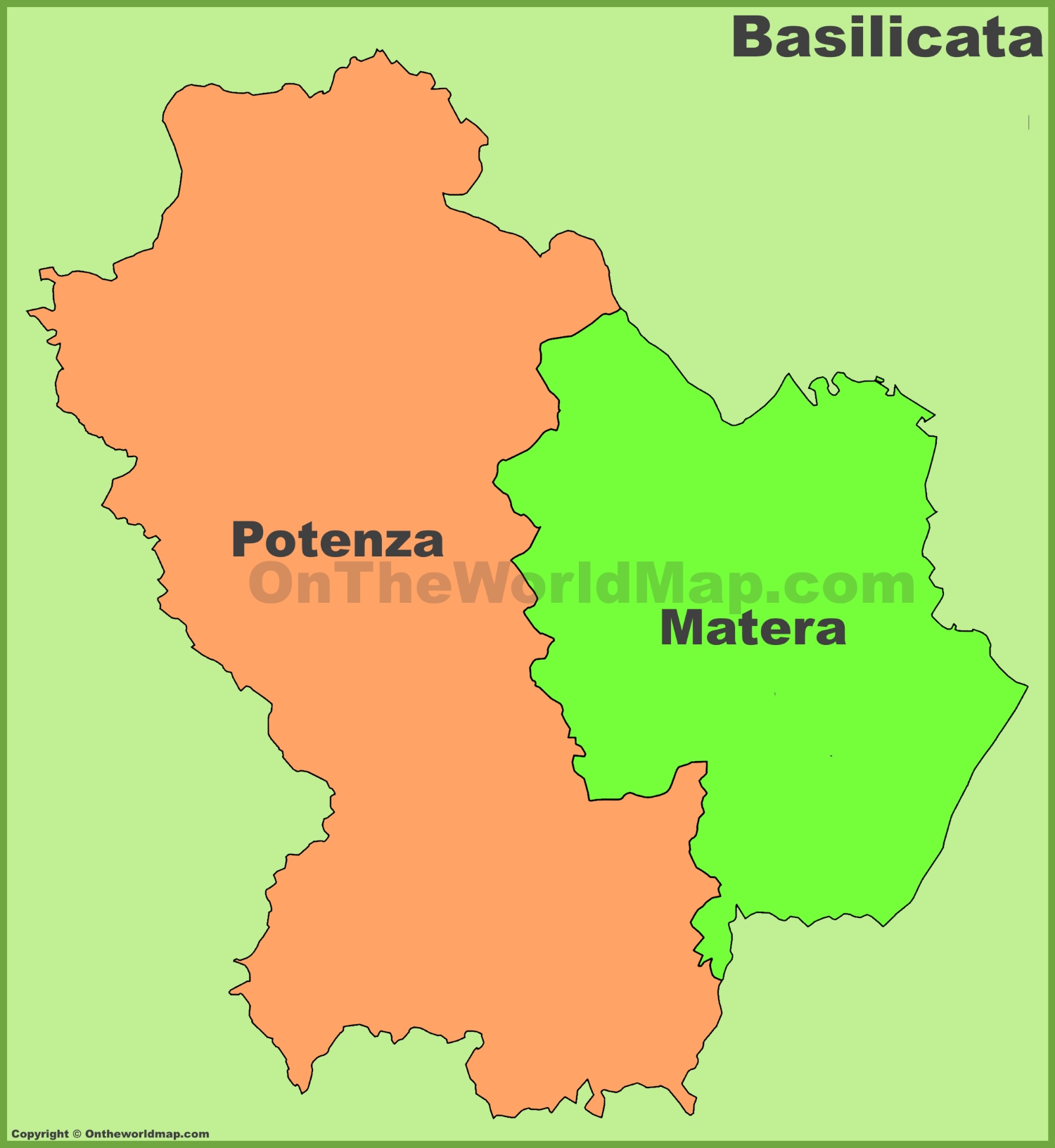
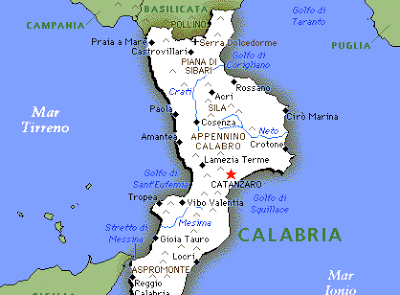
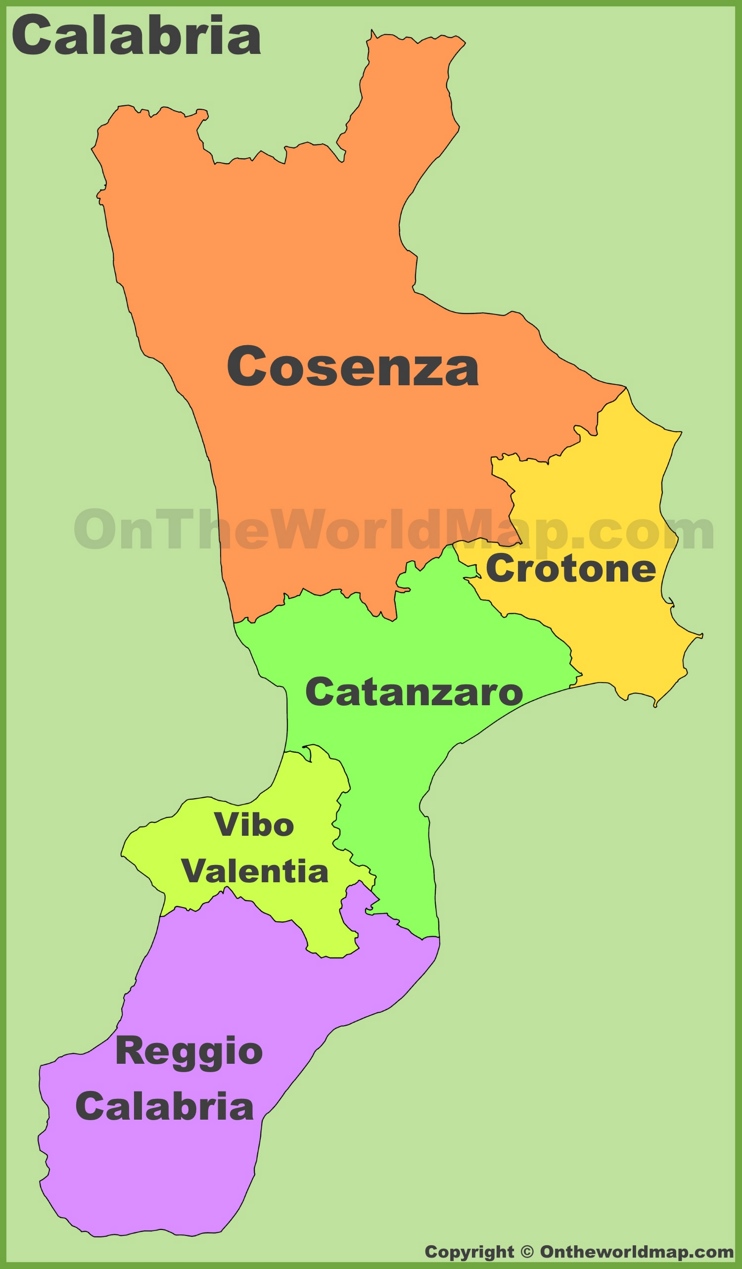
Calabria is at the toe of the boot, the extreme south of Italy – lapped by the splendid crystal blue Ionian and Tyrrhenian Seas and separated from Sicily by the Strait of Messina. The warm climate, the beautiful colors of the sea, rocky coasts that alternate with sandy beaches, a nature that is wild and mysterious, the strong and genuine flavors of local food and the vestiges of its ancient origins make Calabria a unique place that vacationers can enjoy in both winter and summer.
Any wish can be fulfilled. Those who love nature, its scents and mysteries, can explore the Calabrian hinterland, discovering pure and unpolluted sceneries, where huge green belts alternate with blue lakes and waterfalls.
On the other hand, those who prefer basking in the warm rays of the sun and dive into a crystal-clear sea can choose from the many charming localities along the long Tyrrhenian and Ionian coasts.
Instead those who prefer to learn about the region’s past, Calabria, the cradle of Magna Graecia and land of ancient settlements, is full of splendid churches, monasteries, castles, palaces and towns where age-old traditions still survive.
Art lovers will not want to miss the occasion to see the famous Riace Bronzes, on display in the National Museum of Reggio Calabria. The bronzes are an important vestige of Magna Graecia, an epoch that shaped the history of this region significantly. These beautiful statues, representing two warrior heroes, are a rare example of classical Greek sculpture.
With its 497 mi of coast, Calabria offers a wide choice of gorgeous beaches; in particular, Capo Vaticano, in the province of Vibo Valentia, is defined as one of the 100 most beautiful beaches in the world.
Calabria is a land of strong and intense emotions; such is no less true when it comes to cuisine. Witness the famous Calabrian hot pepper (pepperoncino), found in most Calabrian typical dishes. From toasted bread with n’duja sausage or sardines – called the “caviar of the poor” – to pork sausages, from pasta sauces to fish dishes.
The strong flavor of hot pepper contrasts with the sweet taste of the Tropea red onion, protected by the PGI quality mark. The onion is used for seasoning dishes as well as for curative purposes.
Some of the delicacies among Calabrian products and typical dishes that explorers of this amazing region must try include: extra-virgin olive oil, wines, bergamot liqueurs, liquorice, citron and herbs, honey and jams, special types of homemade pasta (strangugghj, fileja, maccaruni) that are still made today using the old methods.

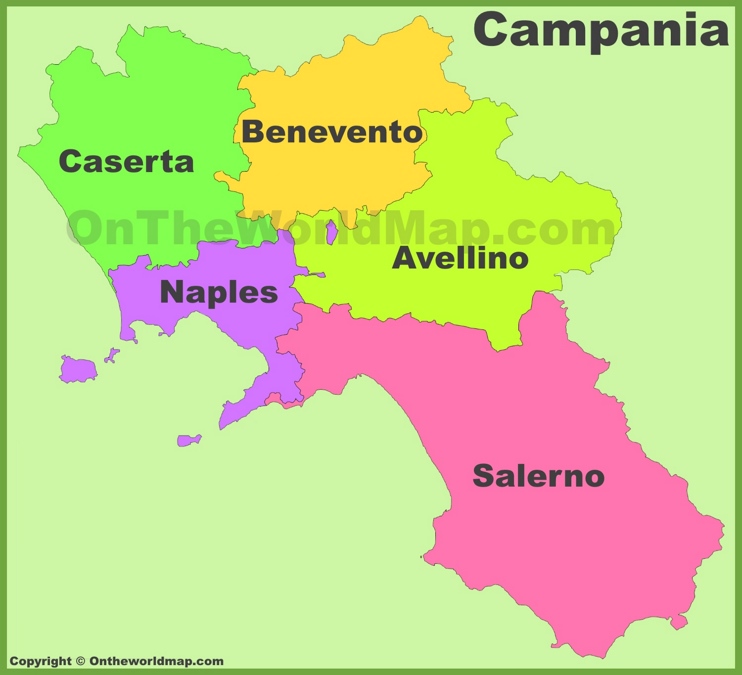
Campania is one of the regions of Southern Italy and stretches along the Tyrrhenian Sea, from the mouth of the Garigliano River to the Gulf of Policastro.
The mild climate, the beauty of the coasts, the richness of its art and history, and the love for food make Campania the fascinating territory that it is. The journey begins with the sea, the region’s uncontested queen, with its intense colors, its coasts that are crawling with bays, coves and rock faces. The waters here boast the islands in the Gulf of Naples, Capri and Ischia – true natural masterpieces.
This region is made even more charming by the flourishing Mediterranean vegetation that alternates with its small, charming towns that narrate the history and traditions of Campania and make any stay here unforgettable.
And how can we forget the natural endowments that dominate this region: Vesuvius, gloomy and mysterious, loved for its beauty and feared for its power. Then, Naples, famous around the world for the intensity and passion of its music, but not only, mingles high-brow culture with the popular, the sacred with the profane, and the joyful with the melancholic. Sorrento, a town that spreads over a terrace of tufo, seems to tumble into the sea.
Campania is cheerful and radiant, well-known for the typical products from the land. Thanks to the sun, this region can boast the juiciest and tastiest tomatoes in the world that flavor the many local dishes and, last but not least, the famous pizza and calzone. The pizza maker who invented a tri-color pizza with tomato, mozzarella cheese and basil in honor of Queen Margherita of Savoy, became a legend; this pizza still survives with the traditional name of pizza Margherita.
Naples is also the homeland of Italian spaghetti. The sauces are numerous and all very tasty, but what matters the most is that the pasta is perfectly-cooked; the people of Naples are certified experts in this!
Another pride of this region is the dairy produce, with the famous buffalo mozzarella, masterfully produced in the areas of Mondragone, Battipaglia, Capua and Eboli.
The most typical desserts are Neapolitan through and through: crispy sfogliatelle with ricotta cheese, and babas soaked in (rum) liqueur.
The liqueurs? Limoncello of Sorrento and Campanian wines, from Taurasi to Aglianico, Greco di Tufo, Asprino d’Aversa, Lacrima Christi, Fiano and Solopaca, perhaps enjoyed with a Neapolitan meal on a terrace overlooking the sea and a beautiful Neapolitan song playing in the background.
Its mountains, canyons, beaches and lagoons make it one of Italy’s most beautiful and varied landscapes, but few people – and that includes Italians – know anything about it.
Perhaps because it’s tucked away on the country’s northeastern border with Slovenia and Austria, perhaps because of a history of invasions, including the Austro-Hungarian empire, or perhaps because of the many languages spoken by locals, it barely seems like part of Italy.
But although Friuli Venezia Giulia stretches from the snow-capped Alpine reaches of the Dolomites to the sun-kissed waters of the northern Adriatic sea, it never experiences the crowds that leave some parts of Italy straining in the summer.
And yet, say locals, it’s every bit as worth visiting as the rest of Italy.
“Unlike other Italian regions, we’re not advertised and are far from mass tourism,” says local tour guide Roberta Bressan. “Ours is a small-scale, niche reality travelers should discover bit by bit, made of a constellation of beautiful tiny towns and different traditions.”
Vivacious, outgoing, and laidback, there are endless facets to love about Puglia. The people here know how to live; it must be the sunshine, the food, and the wine that make them so friendly. The stiletto heel of Italyis itself a peninsula skirted by the Adriatic and Ionian seas boasting 500 miles of coastline, with a wealth of intriguing and exotic towns all along the way. Puglia offers some of the best beaches, best food, and best festivals that Italy has to offer; all tied up with an exotic feel.
While its southern peninsular position may look isolated, it’s not remote. There are two airports (Bari and Brindisi) and a rail line that runs up the Adriatic coast. Puglia was a byway for colonizers, conquering invaders, and departing crusaders. It became a crossroads of culture, first with the Greeks, then the Romans who brought their version of a super-highway here, the Appian Way, followed by the Byzantines, Normans, Arabs, and Spanish. Each left a mark, giving Puglia a worldly exotic tinge.
Puglia produces a cornucopia of tomatoes, eggplant, peppers, figs, citrus, melons, and almonds, all ripening under that southern sun, and the region is a major producer of olive oil and wine. Add in the local seafood and meat specialties and you’ll eat well here.
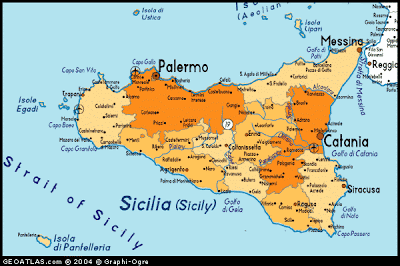
Sicilia is the largest of the Italian islands, separated from the Continent by the Strait of Messina and surrounded by the Ionian, the Tyrrhenian and the Mediterranean Seas. It is one of the pearls of Southern Italy and can be discovered, understood and experienced through a series of itineraries dedicated to areas of interest ranging from nature to history and traditions.
Nature seems to have endowed all its wonders to this land: mountains, hills and above all the sea, with its incredible colors, its crystal-clear water and the beauty of its seabeds, in no way inferior to those of other seas.
Here, the Mediterranean Sea, with its many little islands scattered around the coasts of Sicily – The Aeolians, Egadi and Pelagie Islands, Pantelleria and Ustica – offers unique and the intense sceneries, scents and flavors of uncontaminated nature.
Last but not least, its great volcanoes are symbols of the irresistible beauty and vitality of this incredibly charming region.
The exuberance and warmth of the island of Sicily is evident in its food as well, which tells of Sicilians’ passion and care for good food and genuine flavors.
A wide array of appetizers to whet your appetite, from rice croquettes to cazzilli and crispeddi of Catania, before tasting rich first courses and fish or meat dishes. And finally, one should not pass up the famous Sicilian pastries, mainly prepared with ricotta cheese and almond paste.
Many Sicilian products are protected by DOP and IGT quality marks, making Sicily one of the core diets of Mediterranean; it is famous the world over for the genuineness of its ingredients.
Extra-virgin olive oil, juicy red oranges and the sweet grapes of Canicattì, Pachino tomatoes and Pantelleria capers, prickly pears and the olives of Nocellara del Belice are some of the excellent products that distinguish Sicilian food.
Yet, we cannot forget the most famous cheeses, like Ragusano and pecorino, or tasty sausages, like Sant’Angelo salami, or the different types of crispy bread, like the loaves of Dittaino.
And pour a glass of one of the island’s exquisite, strong and full-bodied wines, ideal when partnered with its unbeatable cuisine.
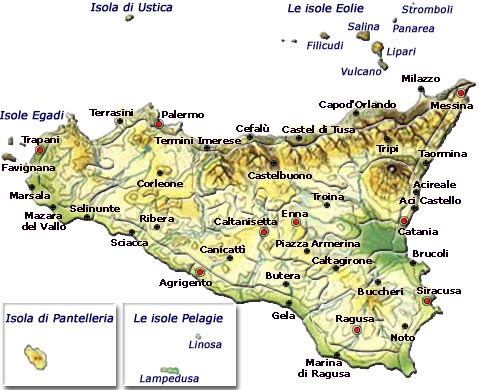
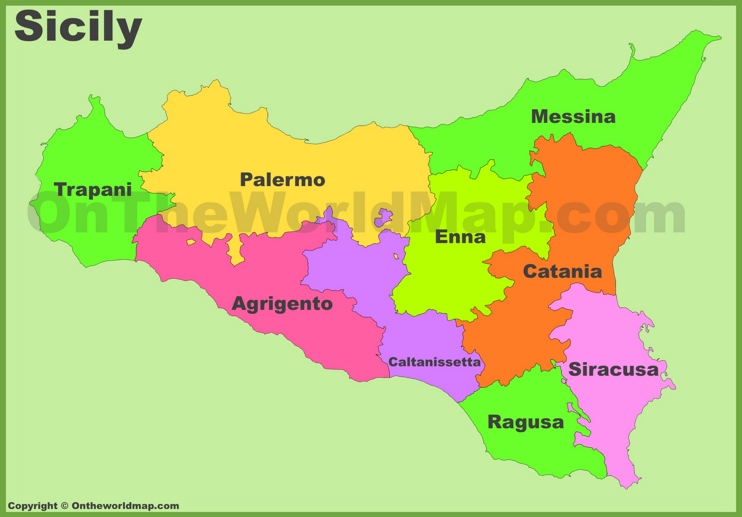
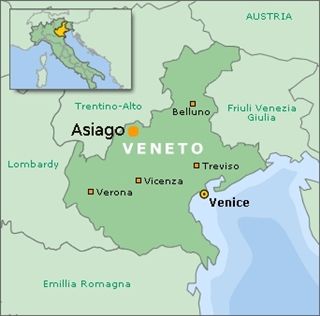
Situated in Italy’s northeast, Veneto extends from the Dolomites to the Adriatic Sea, by way of an expansive range of hills and a valley furrowed by rivers, canals and the Po River Delta.
The typical scenery of Veneto’s coast is the Venetian lagoon, and, right on this very lagoon stands perhaps the most unique city in the entire world – Venice, visited by millions of tourists every year.
Yet all of the Veneto, a region with a thousand different faces, is the custodian of natural, artistic, and traditional treasures.
Veneto expresses an extraordinary variety in its scenery: from the Dolomites, dipped in the crimson shades of the sunset, to the eastern shore of Lake Garda and Peschiera del Garda, Torri del Benaco and other tourist destinations. Long, sandy beaches alternate with well-known resorts such as Jesolo, Bibione, Cavallino and Caorle.
In this spectacular natural setting lies a rich cultural heritage that renders the Veneto such a fascinating region, from its cities of art to the magnificent Palladian villas scattered along the Brenta Riviera. And not to be forgotten are the small villages of Arquà Petrarca, Monselice, Asolo and Bassano del Grappa that bring together the most typical aspects of this diverse and varied region.
Although the cuisine does differ from one province to another, the food of the region is based on some common ingredients: rice, vegetables and especially polenta.
Polenta, particularly loved by the natives of Veneto, is prepared and eaten with meat, fish or cheese. Beans from Lamon (province of Belluno) are a typical product of the area, as is asparagus from Bassano del Grappa, the celeriac of Verona and the red radicchio of Treviso, which has become a universal ingredient even outside Treviso.
Another specialty of this province is the soapa calda, a warm soup with pigeon and chicken; in the nearby areas of the Alps you can also have mushrooms and roe deer, while the Asiago Plateau is well-known for its cheese.
In the lagoon, on the other hand, it’s seafood.
Among the typical dishes of the area are risotto with scallops, scampi and cuttlefish, saor (sardines marinated with vinegar and onions), dried salt cod or Vicenza-style cod. Stewed eel (bisato) is a Venetian specialty.
There are many typical desserts, including fritters, zaletti (polenta cookies), Carnival galani (pastries) and the pandoro from Verona that later became renowned nationally.
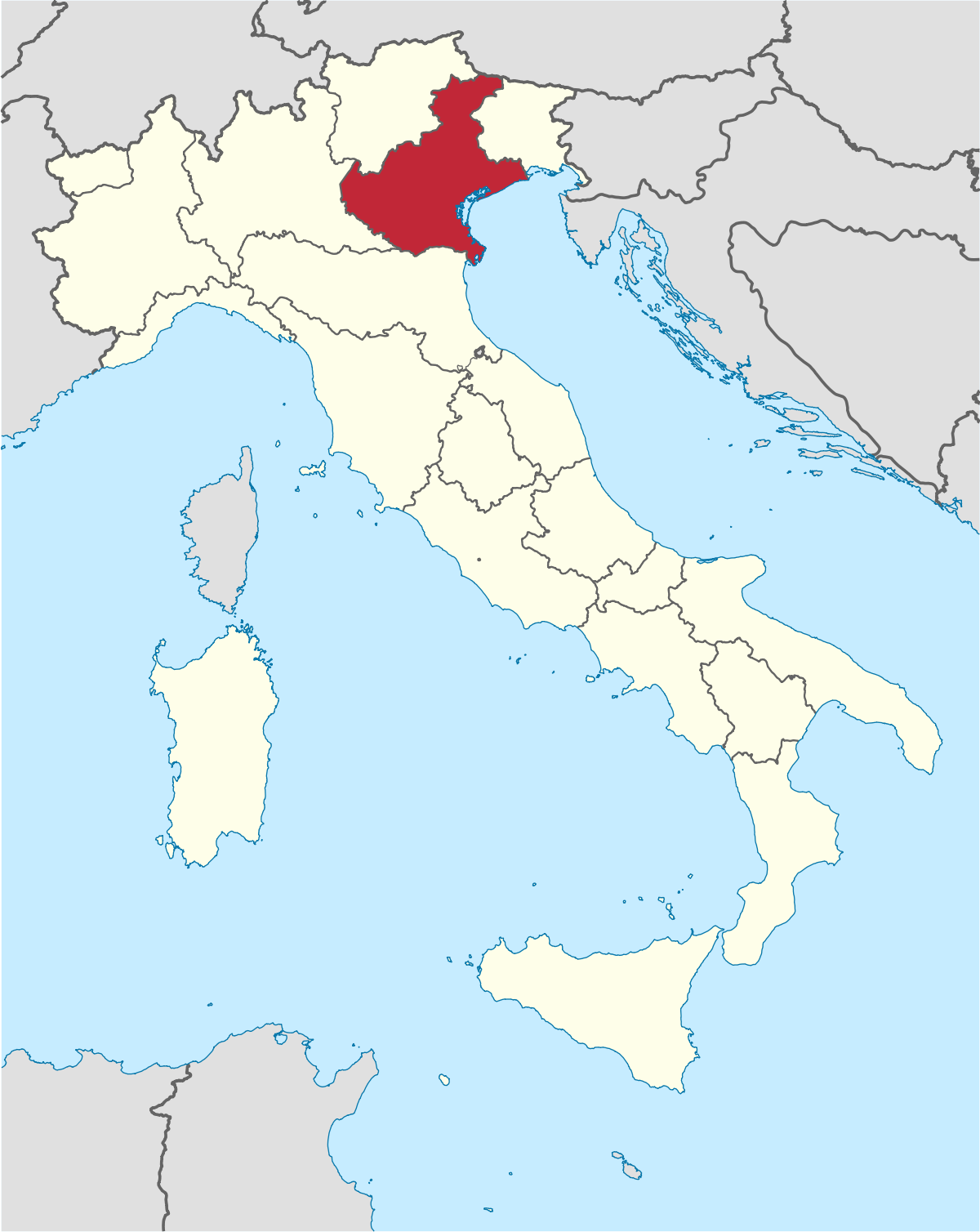
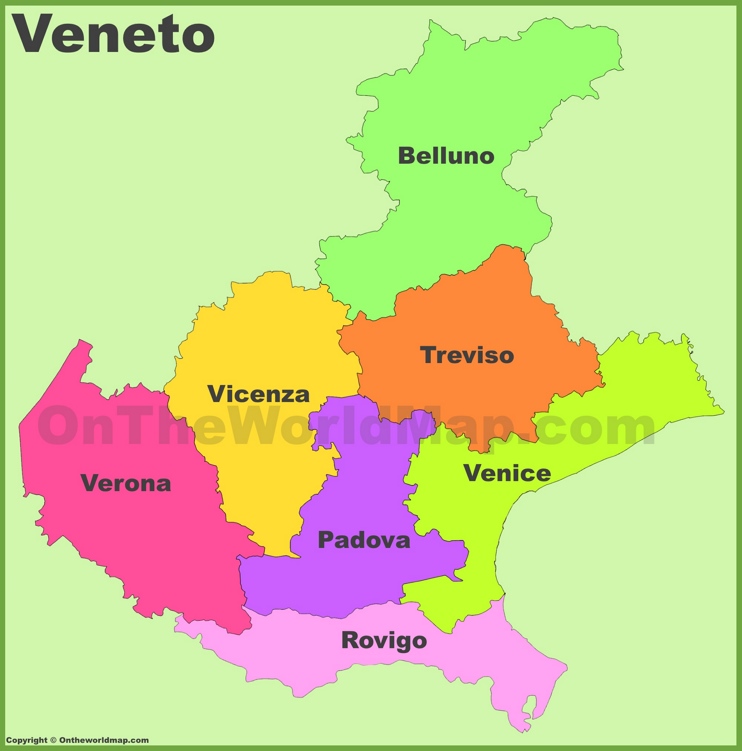
COPPA 2025 Schedule
June 19 - 22 at Adanac Park
